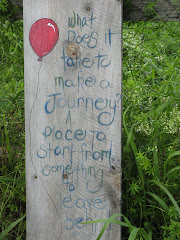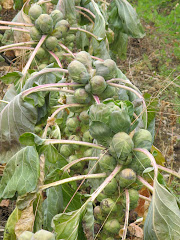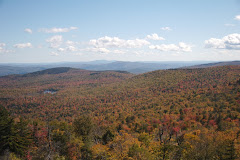This is a rather long essay which I originally wrote for my application to Sterling. It also feels to me like my current credo. Everything I believe in right now is written here. It seems fitting to post it, since everything I write these days seems to be, in one way or another, about what it means to love a place.
How to Love a Place
1. “I am my beloved’s and my beloved is mine.”
I am walking home from the Power Ridge, an outcropping of glacial granite and glittery quartz in the woods of Grafton County, New Hampshire. It is four o’clock, and already the sun is setting, a pink and golden slash on the western horizon. The only sound is the soft fall of my snowshoes as they slide through the snow, and the evening whispering of the naked trees. I am walking slowly, pacing myself to the rhythm of the sinking sun as it spreads its golden across the sharp world of winter whites and grays and blues.
We discovered the Power Ridge by accident, its rocky back unearthed due to some logging on the land adjacent to ours. Unable to resist the call of open spaces, we followed the logging cut one year until we stumbled across this ridge. “There’s something scared about this place,” my mother said. She named it the Power Ridge and the name stuck, though it is not marked on any official map. It is not especially high or dramatic – just a granite ledge with a few spruces growing along its edges. In the winter it boasts a sweeping view of Mt. Cardigan, but in the summer the path through the logging cut is overrun with wild blackberries, and the view obstructed by the racket of green. But it is one of those rare places that, once you’ve been there, never lets you go. Standing on the ridge, I get a sense of endless space, as if the thousands of years that have shaped these woods are very close, listening and watching. On a cold afternoon in December, looking out across the forest toward white-tipped Cardigan, I feel as if I am standing in the very heart, the very essence of winter. Here the wind and the silence are king, and each time I make the journey through the snowy woods toward the sky, I am refreshed and renewed.
Walking home along the familiar trail, at that scared hour on the edge of dusk, when the day and the night meet and bow to each other in a beautiful dance and all the trees bend close together in prayer, I am suddenly overcome with the weight of how much I love this place. My grandparents’ bought this parcel of hilly woodlands in the fifties, when land was cheap and abundant. I grew up catching newts in its streams and rambling on secret paths among its pine and maple. But what does it mean to own a place? If I have any right to these woods, it is not because of any paper that my parents have tucked away in a drawer. Ownership is more complex and sacred than any deed or human law. If I own these woods, it is only because they, too, own me. If these trees and this ridgeline and this snowy path belong to me, it is only because I, too, belong to them. “I am my beloved’s and my beloved is mine,” writes the poet of the Song of Songs. Love, it turns out, is the only ownership, love and wonder and hard work.
I am almost home, and I pause at the edge of a meadow to look back at the trail through the woods from which I’ve come. The sun has disappeared behind the bulk of Braley Hill and the sky is hardening into a cold winter blue. The distant ridges are outlined in shadow. As darkness settles over the meadow, with the mountains as my witness, I make a pact to own this land and in return, to be owned by it.
2. Falling In Wonder
I love winter. I love the slow decent into darkness as the days quicken and the nights lengthen. I love it when bone-hard Orion first rises over the November hills. I love the cold mornings that shock me awake, the harsh colors and sharp contrasts of the landscape, and the white emptiness of the forest. So each year, in late April, when the ground begins to thaw, and the woods are fragrant with mud, I am always astounded at my own happiness. I am surprised, again and again, by my own reaction to the return of the light and the budding earth. Spring awakes a quickness in me. It sets me singing with possibility. It is impossible to walk among cascades of cherry blossoms and patches of daffodils without sensing something of their easy joy and hard-earned playfulness. Spring opens in my heart a renewed wonder, a wonder that, though it happens each season, grows and grows, like the new buds that open daily into leaf.
Spring is the unexpected season. Everywhere, the voices of the young green shoots cry out about survival. After the long, cold winter, the world emerges triumphant. Buds that have been waiting since September, shaken and broken by blizzards, erupt proudly into new life. The hard earth softens and opens to receive seed after seed. Colors once again throw their finery over the landscape – the sweet red of young sugar maples, the shy pink of the dogwoods, wildflowers bursting purple and blue across the fields. Everywhere the woods are a raucous of greenery. The mere fact of these things, of colors and sunshine, of the ability of oak and lily and cattail to survive and blossom, is enough to stop me mid-step in wonder. We take so much for granted in this world: the land and its resources, and even the cycles of loss and renewal that are the basis of all life. Spring reminds me that there is no miracle too small, that every bud that opens is a testament to the unbelievable tenacity of the earth. Everywhere I go, I am stunned with wonder. It is my breath and my speech, and even in sleep, it doesn’t leave me.
Four hundred feet below the Power Ridge, in a small glade of spruce and beech, I am sitting at the edge of a small, mossy bog. It is early evening, and the air is loud with peppers. I am sheltered by a lacy canopy of young leaves, bright and delicate as feathers. The first lady slippers and trilliums are blooming, and the bog is teeming with life after its icy sleep. Frogs and salamanders are waking up and the forest is heavy with a sense of excitement. Leaning against an old oak, watching the patterns the wind makes on the water, I am falling in wonder. It is not like falling in love. I have loved this place my whole life and I know what it feels like. Falling in wonder is different. It is the realization that though I am merely a shadow in the life of this bog, I want it to last, beyond me and beyond my children. Wonder has its own scent: freshly cut hay and rich, dark soil, a clean wind blowing through the budding trees. It is something palpable, something I can hold in my hands. It is the desire to be a part of something bigger than myself, the knowledge that without the land, in all its specifics, I am nothing.
3. Hot Sun and Hard Work
It is early morning, and though it is August, it is still cool. A thin silver mist is rising off the fields, the moon is setting on the western horizon, and I am kneeling in the dirt, harvesting carrots. There are four beds of them, their feathery green tops stretching out in a lush carpet to either side of me. I feel small and clunky when I am out in these fields, among the simple elegance of vegetables.
Summer is the season of hands. It is the season of planting and hoeing, weeding and pruning and harvesting. In the summer I rise at dawn and come to these fields, where, all day, I tend to the earth. I move slowly among rows of turnips and beets, meticulously searching out the young pursline and pigsweed among them. I walk the fields just after dawn, harvesting spinach and arugula in the quiet morning before the full heat of the day settles over the farm. In the summer my body adjusts to the rhythms of the land. A permanent layer of dirt settles under my fingernails. My hands grow calluses in the places where the hoe touches my skin. My world narrows and widens to the cycles of the land: the smell just before a rain, the lengthening days, the heat and the sunshine, the wind, and always, the knowledge of the first frost that will, inevitably, come.
Farming is hard, rhythmic work, and each year, it is more of the same. The tomatoes have to be staked and tied, the cukes have to be harvested every other day, the late planting of lettuce has to go in, the summer raspberries have to be pruned, the kale has to be weeded, the strawberries have to be mulched. The earth is not forgiving, but it does yield to hard work and tender care. Each season the pumpkins grow from two-centimeter-high seedlings into a knee-high forest of thick green vines. The tomatoes ripen into shades of red-orange and bright yellow, deep purple and blushing rose. I spend long mornings snapping silver-green leaves of kale from tough stalks and cutting fragile heads of lettuce from the ground. These are no small miracles. I started farming four years ago and it has revolutionized my life. I have never been as close to the earth as I am each summer, as I guide crop after crop through its life toward fruition.
At the heart of farming is the desire to be a part of the process of growing things. I do not farm to dominate and destroy, or to make a profit. I farm because, above all, I love the earth, and I am always tying to get closer to its heart. I want to understand its vital cycles, its power and its vulnerability, what it can give and what it can take away. The earth is a tough and compassionate teacher. All summer, as I hoe the beds and irrigate the fields, I am riding out a prayer. I put everything of myself into the hard work of my hands, but in the end, it is the earth that produces the bounty. Farming is a partnership, an ownership, between me and the land I love. As a farmer I am a witness and a guide, a student and a teacher, and, more than anything, a friend.
I love wild places. But this morning, pausing in my work to watch the last bony ridge of the moon fade behind the trees, I am thinking of the miracle of cultivated land and the beauty of carrots. The thin orange root I am holding in my hand, rough and covered in dirt, with its crown of greenery, is the fulfillment of a promise. It is not merely a vegetable – it is hours of sun and rain and the work of hands. I am blessed to have been a part of this process, a process that begins with loving the growing things of the earth. I wipe the carrot on my jeans and take a bite. The sweet, field-fresh flavor is heightened with the acrid taste of dirt. It is, of course, the best carrot I have ever eaten.
4. Shehecheyanu
Barukh attah Adonai eloheinu melekh ha-olam, she-hecheyanu v’ki-yemanu v’higianu lazeman hazeh. Blessed art thou, Lord our God, Master of the Universe, who has kept us alive and sustained us and enabled us to reach this season.
Shehecheyanu is my favorite Jewish prayer. It is traditionally recited on the first night of a holiday, or on the occasion of anything new or unusual: the birth of a baby, the beginning of school, the start of a new job, a wedding or Bar-mitzvah. It is a prayer of gratitude to remind us how lucky we are to arrive each season at a moment of celebration. At its root is the idea that to simply arrive, whole and healthy, in each new day of our lives, is a miracle and a blessing.
Autumn is the season of arrival. After the messy abundance of summer and before the long sleep of winter, fall is the harvest season, the season of gathering and reaping. The ground hardens and freezes, the leaves turn golden and fall, the crops fold back into the earth. There is something sweet and sad in the evening air, something that stills me and steadies me. It is the season of slowing down and starting over, the beginning of the cycle of death and rebirth that guides the land through the winter and back into spring. In the fall, it is the knowledge of being present in that ancient, sacred cycle, that sustains me and carries me forward.
Shehecheyanu is a prayer about the miracle of being sustained, alive, through each moment. I believe that every day merits a Shehecheyanu. Every moment we are alive is worth celebrating. Though it is traditionally only said on special occasions, I say Shehecheyanu nearly every day. I say is as a blessing over my food. I say it as I am preparing the garden for winter and storing away the last of the beets in the cellar. Walking through the autumn woods, I say it to the falling leaves and to the last blue waters of the ponds before they ice over into black. I do not believe in God, but I do believe in the miracle of reaching, again and again, another season. I do believe in the miracle of being sustained, moment by moment, into the next day, the next month, the next season. Arrival is more complicated than simply waking up each morning. Arrival means coming from somewhere. Lives, like seasons, do not exist in vacuums. Fall comes from summer, and from fall comes winter. To arrive is to be aware of the delicate and beautiful dance of the earth, and to say a Shehecheyanu for that dance.
I am back in the woods of Grafton County, walking up to the Power Ridge through the golden maze of beach and oak. The woods are heavy with the sharp scent of wholeness and fulfillment. When I reach the top, I will say a prayer for arrival, a prayer for the woods and the streams and the gardens that have sustained me and kept me alive and allowed me to reach this moment on this beloved ridge. With the wind in my face, looking out from this season into the next, I will open my arms to the sky, and bow down to the earth, and sing a Shehecheyanu for the land.
5. How to Love a Place
If there are solutions to the environmental crises of our time, they lie in our willingness to enter into a new kind of ownership with the earth, an ownership rooted in reverence, an ownership defined not by rending and wasting, by power-over and use-of, but by keen understanding and honest love and mutual responsibility. They lie in our capacity to fall in wonder, walking daily from miracle to miracle, our capacity to steep ourselves so completely in the beauty and the bounty of the natural world that to destroy it becomes impossible. They lie in our ability to be tender shepards of the land, to kneel down in the earth and plunge our hands into the dirt.
If there are solutions to the environmental crises of our day, they lie in the capacity of each of us to arrive, moment by moment, in the season of gratitude and grace. They lie in our capacity to guide and sustain not only ourselves, but our fields and our mountains and our woodlands, toward a season in which our footsteps fall in harmony with those of the fox and black bear and the cardinal. Now is the time for concrete change, but it must begin in the specifics of how we love a place: the way the October sunlight falls on a pumpkin vine, the sharp curve of a distant ridge, whitened and sharpened by winter, the ordinary song of a chickadee in the garden, the familiar sensation of the rough and weathered bark of a sugar maple against the palm of your hand.
Friday, September 28, 2007
Subscribe to:
Post Comments (Atom)





































































No comments:
Post a Comment